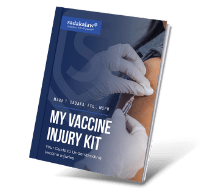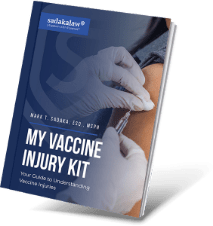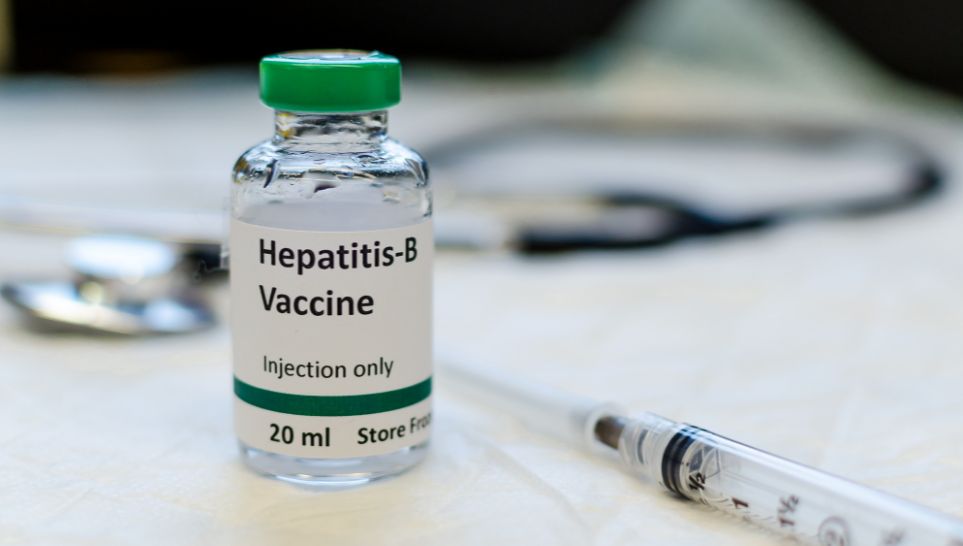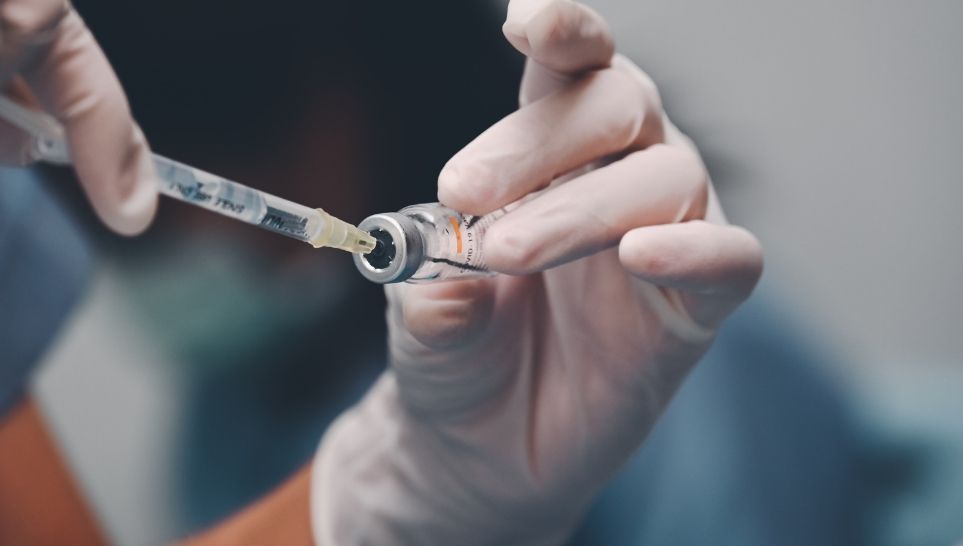How Long do HPV Vaccine Side Effects Last?
The good news that is in most cases HPV vaccine side effects go away quickly. The most common side effects are pain and redness where the shot was given. Other common side effects include fever, headache, and feeling tired. Allergic reactions that result in hives and fever usually disappear within a few days. Unfortunately, some side effects can last long, changing lives forever.
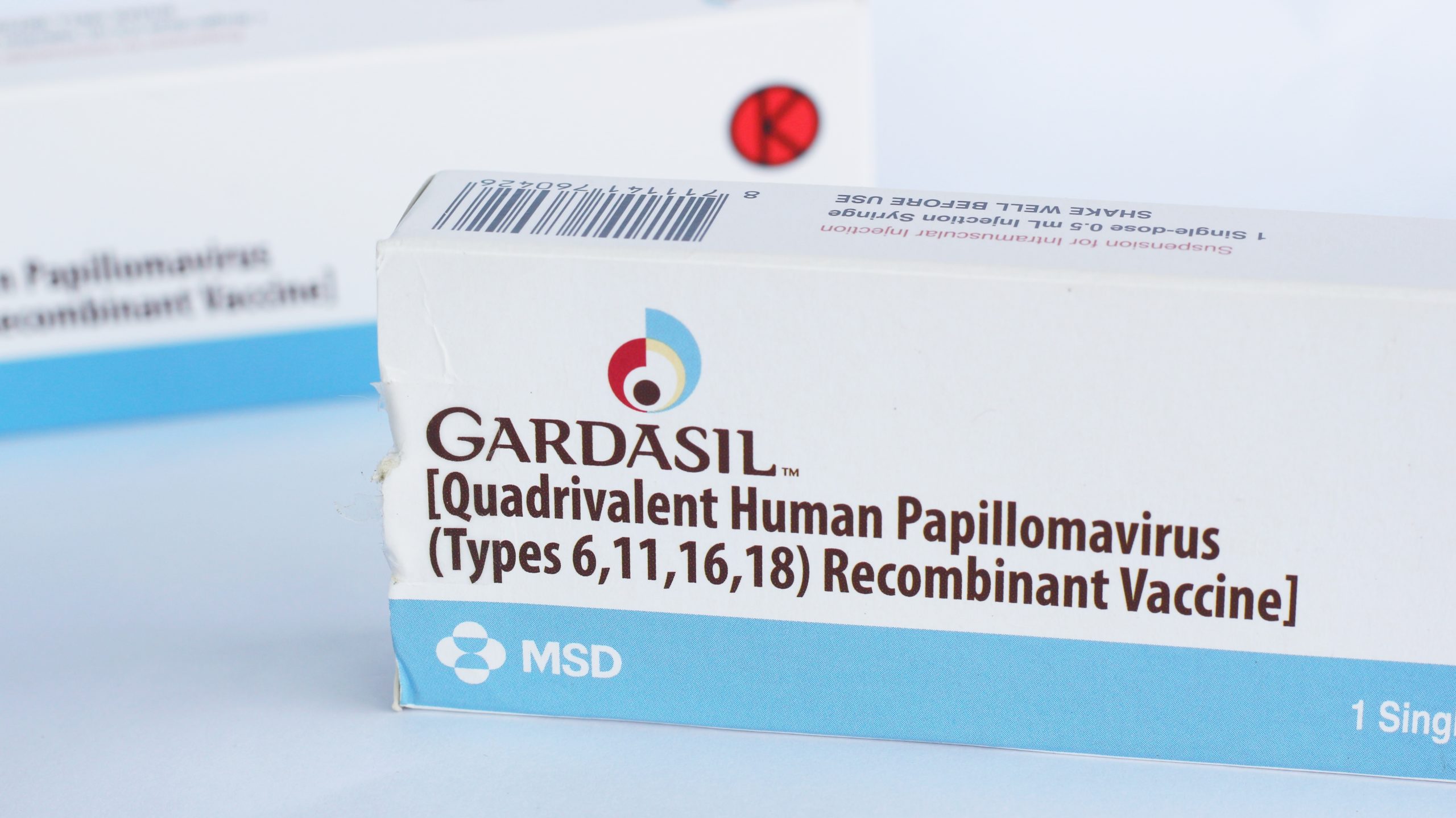
Summary of HPV Vaccine Side Effects Discussed in this Article
[CLICK ON THE LINKS TO READ MORE ABOUT HOW LONG DOES EACH HPV SIDE EFFECT LAST ]
-
- Chronic Fatigue – no known cure, could be permanent
- Chronic Regional Pain Syndrome – no known cure, could be permanent
- Dysautonomia – no known cure, could be permanent
- Fibromyalgia – no known cure, could be permanent
- Primary Ovarian Insufficiency – treatments available, could be permanent
- Reactive Arthritis – treatments available, usually not long-lasting
- Syncope – no treatment, usually not long-lasting
Chronic Fatigue Syndrome (CFS)
Chronic fatigue syndrome is commonly misdiagnosed as other conditions, such as multiple sclerosis (MS), Lyme disease, or depression. A person with CFS may experience a wide variety of symptoms that can make it difficult to carry out daily activities. Not much is known about chronic fatigue syndrome, but there are several young ladies diagnosed with the condition after receiving HPV vaccines like Gardasil.
The most common symptoms of CFS include:
- Extreme fatigue that is not improved by bed rest
- Unrefreshing sleep
- Muscle pain
- Joint pain
- Headaches
- Cognitive difficulties (trouble concentrating, memory problems, and word-finding difficulties)
- Sore throat
- Tender lymph nodes in the neck or armpits
- Dizziness or lightheadedness
What are the treatments for chronic fatigue syndrome?
While there is no cure for CFS, there are treatments that can help manage symptoms. These include:
- a balanced diet and regular exercise
- stress reduction techniques, such as meditation or yoga
- cognitive behavioral therapy (CBT)
- medications to treat specific symptoms, such as painkillers or antidepressants
How long does chronic fatigue syndrome last?
There is no known cure for CFS, and it can last for years. In some cases, CFS may go into remission and then come back.
Chronic Regional Pain Syndrome
Chronic regional pain syndrome is a condition that causes long-term, constant pain. It typically develops after an injury or surgery. For example, the placement of a needle in the wrong place from a vaccine can trigger CRPS. While the exact cause is unknown, it is thought to be due to a problem with the nervous system.
The symptoms of chronic regional pain syndrome are typically felt in one area of the body. It is often described as a burning, throbbing, or shooting pain. The pain may be constant or come and go. It can range from mild to severe. Typically, there is a feeling of a temperature change at the location of the pain. There are cases where CRPS spreads throughout the body.
There are two types of CRPS: Type 1 and Type 2. The main difference between the two is the involvement of the sympathetic nervous system. In Type 1 CRPS, also called reflex sympathetic dystrophy (RSD), the sympathetic nervous system becomes overactive. This results in increased pain and swelling. In Type 2 CRPS, there is damage to the sympathetic nervous system. This leads to decreased pain and swelling. Both types of CRPS can be very painful and debilitating. There is no cure for CRPS, but treatments are available to help manage the pain and other symptoms.
Chronic regional pain syndrome can have a significant impact on quality of life. It can make it difficult to perform everyday activities and can lead to depression and anxiety.
How is chronic regional pain syndrome diagnosed?
A diagnosis of chronic regional pain syndrome is typically made based on the symptoms. Your doctor may also order imaging tests, such as MRI, to rule out other conditions.
There is no single test that can diagnose chronic regional pain syndrome. Instead, the diagnosis is made based on the presence of certain symptoms and exclusion of other conditions.
How is chronic regional pain syndrome treated?
There is no cure for chronic regional pain syndrome, but there are treatments that can help relieve the symptoms. These include medications, physical therapy, and lifestyle changes.
- Medications that are commonly used to treat chronic regional pain syndrome include antidepressants, anticonvulsants, narcotics, and muscle relaxants.
- Physical therapy can help to stretch and strengthen the muscles and improve the range of motion.
- Lifestyle changes, such as quitting smoking and regular exercise, can also help to reduce pain and improve quality of life.
- Surgical options are typically only considered if other treatments have failed. Surgical procedures that have been used to treat chronic regional pain syndrome include spinal cord stimulation, neuromodulation, sympathectomy, and rhizotomy.
How long does chronic regional pain syndrome last?
There is no cure for chronic regional pain syndrome. This chronic pain condition, however, can go into remission or disappear over time with therapy. So this is one of the potential HPV vaccine reactions that can last a very long time.
Sadaka Law has successfully obtained compensation for people who suffered chronic regional pain syndrome. Learn more about our results here.
Dysautonomia
Dysautonomia is a general term used to describe a group of medical conditions that affect the autonomic nervous system. The autonomic nervous system controls all of the automatic functions of the body, such as blood pressure, heart rate, digestion, and sweating.
Dysautonomia can be caused by a variety of different medical conditions, including diabetes, certain types of cancer, and Parkinson’s disease. It can also be caused by certain medications or by an injury to the autonomic nervous system. Many young ladies have been diagnosed with dysautonomia after receiving the HPV vaccine.
What are the symptoms of dysautonomia?
Dysautonomia can cause a variety of symptoms, including lightheadedness, fainting, fatigue, and blurred vision. In some cases, dysautonomia can lead to more serious problems, such as heart arrhythmias or respiratory failure.
Other symptoms include:
- Abdominal pain
- Blurred vision
- Constipation or diarrhea
- Dizziness and/or nausea
- Fainting
- Heart palpitations
- Lightheadedness
- Shortness of breath
- Sweating
- Vomiting
How is dysautonomia treated?
There is no cure for dysautonomia, but there are treatments that can help manage the condition. Treatment typically focuses on relieving symptoms and preventing complications.
How long does dysautonomia last?
Dysautonomia is a chronic condition that has no cure.
However, with treatment, many people can manage their symptoms and live relatively normal lives. If you or a loved one has been diagnosed with dysautonomia after receiving the HPV vaccine, Sadaka Law can help. We have successfully represented people who have been injured by vaccines, and we may be able to help you too. Contact us today for a free consultation.
Fibromyalgia
Fibromyalgia is a long-term condition that causes pain all over the body. Fibromyalgia has been reported in people who receive the HPV vaccine.
Fibromyalgia is a disorder that causes musculoskeletal pain and fatigue. The cause of fibromyalgia is unknown, but it is believed to be related to changes in the central nervous system. Fibromyalgia symptoms include:
- Musculoskeletal pain: This is the most common symptom of fibromyalgia. The pain is often described as a deep ache that affects the muscles and bones.
- Fatigue: People with fibromyalgia often feel tired and have difficulty sleeping.
- Cognitive difficulties: Fibromyalgia can also cause problems with memory, concentration, and mental clarity. This is sometimes called “fibro fog.”
- Other symptoms: People with fibromyalgia may also experience headaches, depression, anxiety, and irritable bowel syndrome.
What causes fibromyalgia?
The cause of fibromyalgia is unknown, but there are several theories. One theory is that fibromyalgia may be an autoimmune disease. This means that the body’s immune system attacks healthy tissue by mistake. Another theory is that fibromyalgia may be caused by changes in the central nervous system. This theory is based on the fact that people with fibromyalgia often have “trigger points” in their muscles that are painful when touched.
There is no cure for fibromyalgia, but there are treatments that can help relieve symptoms. Treatments include medications, exercise, and stress reduction.
How long does fibromyalgia last?
There is no definite answer to this question as the condition can vary greatly from person to person. Some people may only experience occasional flare-ups, while others may have more chronic and long-lasting symptoms. In general, however, most people with fibromyalgia find that their symptoms tend to come and go over time, and that they eventually improve or even disappear altogether. The length of time that fibromyalgia symptoms last also depends on the severity of the condition. People with milder cases may only experience occasional flare-ups that last for a few days or weeks, while those with more severe cases may have chronic pain and fatigue that persists for months or even years. There is no predicting how long any particular person will experience fibromyalgia symptoms, but in general, the condition tends to improve over time.
Difference between fibromyalgia and chronic fatigue syndrome?
There is no one definitive answer to this question as the two conditions can differ quite a bit from person to person. However, some key differences between fibromyalgia and chronic fatigue syndrome may include the following:
- Fibromyalgia is generally characterized by widespread pain and tenderness in the muscles, joints, and other soft tissues, while chronic fatigue syndrome may be more likely to cause extreme fatigue and flu-like symptoms.
- People with fibromyalgia often report difficulty sleeping, while those with chronic fatigue syndrome may feel more rested after a night’s sleep but still experience significant fatigue during the day.
- Fibromyalgia is sometimes associated with other conditions such as irritable bowel syndrome or migraines, while chronic fatigue syndrome is less likely to be accompanied by other health problems.
There is considerable overlap between the two conditions, and many people may experience symptoms of both fibromyalgia and chronic fatigue syndrome. However, the exact cause of either condition is still unknown, and further research is needed to better understand the differences between them.
Primary Ovarian Insufficiency
Primary ovarian insufficiency (POI) is a rare condition in which a woman’s ovaries stop working normally before she is 40. The condition may also be called premature ovarian failure (POF) or early menopause.
What is the difference between primary ovarian insufficiency and menopause?
Primary ovarian insufficiency (POI) is different from the better-known condition known as menopause, which typically occurs around age 51. The first difference, of course, is the age of onset. POI happens to women before the age of 40.
In POI, a woman’s ovaries stop producing eggs, and levels of the hormones estrogen and progesterone decline. This can cause irregular periods, hot flashes, night sweats, vaginal dryness, and difficulty getting pregnant.
Most women with POI do not experience all of these symptoms, and some may have no symptoms at all. For many women, the first sign of POI is difficulty getting pregnant.
Primary ovarian insufficiency can have a significant impact on a woman’s quality of life. it can cause emotional stress, anxiety, and physical symptoms like hot flashes and night sweats. for some women, primary ovarian insufficiency may also lead to early menopause.
Sadaka Law was the first to prove that Gardasil can cause POI. Read that decision -> here.
How long does POI last?
POI can be temporary or permanent. it is considered temporary if a woman’s ovaries start working again on their own. This happens in about 10% of women with poi.
POI is considered permanent if a woman’s ovaries do not start working again and she does not have any menstrual periods for 12 months. about 90% of women with poi have permanent ovarian insufficiency.
Reactive Arthritis
Reactive arthritis is a type of arthritis that occurs as a result of an infection or vaccination. The most common form of reactive arthritis is called Reiter’s syndrome. Reactive arthritis usually affects the joints in the lower limbs, specifically the knees, ankles, and feet. In some cases, the joints in the hands and wrists may also be affected. Reactive arthritis can also cause inflammation of the tendons (tendonitis), which is often experienced as pain in the heel or sole of the foot.
Reactive arthritis is thought to occur as a result of an immune reaction and has been reported after the HPV vaccine. The most common infections that are associated with reactive arthritis are bacteria known as enteric pathogens. Vaccines like the HPV vaccine and flu vaccine have been linked to reactive arthritis.
How long does it take for reactive arthritis to appear?
The symptoms of reactive arthritis typically develop 1-3 weeks after vaccination.
What are the symptoms of reactive arthritis?
The most common symptom is joint pain, which is often accompanied by swelling and redness. Other symptoms may include:
- Tendonitis is a common symptom of reactive arthritis. Tendonitis is the inflammation of a tendon, which is the tissue that connects muscle to bone. The most common symptom of tendonitis is pain in the foot.
- Uveitis (inflammation of the eye) is another common symptom of reactive arthritis. Symptoms of uveitis include redness, pain, and blurred vision. Skin rash is another possible symptom of reactive arthritis. The most common type of skin rash associated with the condition is called erythema nodosum. This form of rash typically appears as red, painful bumps on the legs.
- Gastrointestinal problems.
- Skin rashes.
How is reactive arthritis treated?
Reactive arthritis is a treatable condition, but if left untreated it can lead to long-term joint damage. Treatment typically involves a combination of anti-inflammatory medications and physical therapy.
How does reactive arthritis last?
The symptoms of reactive arthritis typically last for three to six weeks. However, the joint pain and swelling may persist for months or even years in some cases.
Syncope
Syncope is a sudden loss of consciousness and muscle strength. It can be caused by a variety of things, including low blood pressure, heart problems, and seizures. Syncope can also be a side effect of certain medications.
The most common side effect of the HPV vaccine is syncope (fainting). Syncope usually occurs within 15 minutes of vaccination. Other common side effects include pain or swelling at the injection site, headache, fever, nausea, and dizziness. These side effects are usually mild and go away on their own. Serious side effects are very rare.
How long does syncope last?
Syncope typically lasts for a few moments after receiving. However, if syncope occurs while the person is walking or driving a car then that can cause permanent injury. For example, syncope can result in a head injury causing permanent brain damage. Syncope can result in a car accident resulting in broken bones. So, while the condition of syncope can be short-lived the results can live long.
What is the HPV vaccine?
The HPV vaccine is a series of shots that help protect against the human papillomavirus (HPV). HPV is a virus that can cause certain cancers, including cervical cancer. The HPV vaccine is recommended by the CDC for girls and boys at the age of 11 or 12 but can be given as early as age 9.
What are the names of the HPV vaccines?
Two HPV vaccines are currently available in the United States: Gardasil 9 (Merck) and Cervarix (GSK). The first HPV vaccine was Gardasil 6, but it is no longer sold.
The HPV vaccine can have side effects, but most people do not have any problems with it. The most common side effect is a sore arm from the shot. Other side effects might include redness, swelling, or itching where the shot was given; fever; feeling tired; headache; stomachache; or throwing up. These side effects usually go away in 1 or 2 days.
Are HPV vaccines safe?
All vaccines can cause injury, however, the risk is very small. The HPV vaccine has been linked to optic neuritis, ADEM, and alopecia.
What happens after you are infected with HPV?
Most people who are infected with HPV do not have any symptoms. Most people who are infected with HPV will never know they are infected.
However, some people may develop symptoms years after they are infected, particularly if they have a weakened immune system. Symptoms can include:
- Warts on the skin or mucous membranes;
- Cervical cancer;
- Other cancers of the genital and rectal area; and
- Recurrent respiratory papillomatosis (RRP), is a rare condition that causes warts to grow in the throat
How do vaccines work?
Vaccines, like the HPV vaccinations, are designed to work by injecting a person with a “dead” or “modified” form of the virus or bacteria, or, more commonly, a piece of the virus or bacteria with an adjuvant. As that person’s immune system deals with the vaccine, their immune system is also preparing to fight the actual virus or bacteria. If you are ever exposed to the disease, your immune system is primed and ready to fight it off, because it has done so before.


